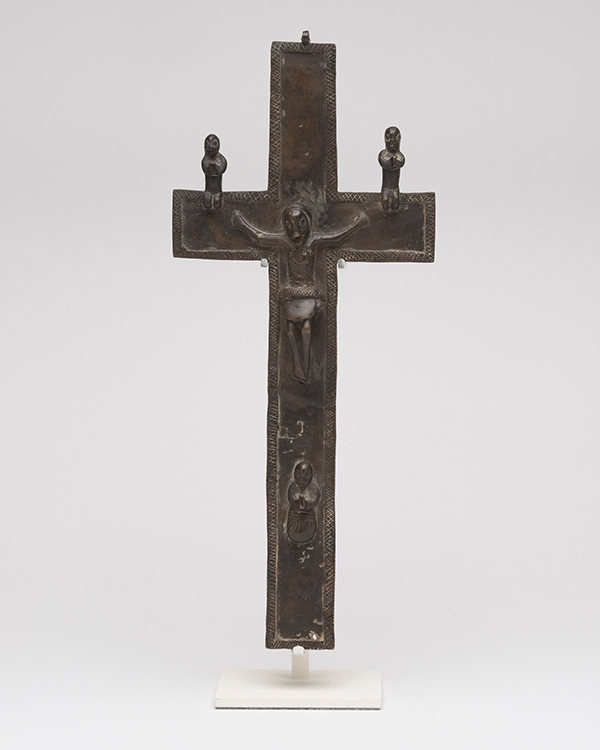Crucifix from the Kingdom of Kongo
Created in the Kingdom of Kongo in the 17th or 18th century, this crucifix demonstrates a mixture of European and African artistic styles. The piece is made of melted-down brass manillas, a form of Portuguese currency used in West Africa.
Here, Jesus has large hands, flattened feet, and African facial features, protruding eyes convey spiritual connection, a regional way to represent Christ which developed in Kongo during the 1500s. Depictions of Jesus as Kongolese became more popular in the kingdom when Dona Beatriz Kimpa Vita founded the syncretic movement Antonianism in the 1690s, which blended Catholic practices with local ancestor worship and spiritual possession, perhaps contemporaneous to the creation of this crucifix.
Crucifixes from Kongo also include figures besides Christ. A woman, possibly the Virgin Mary, kneels at this piece’s base, while more ambiguous figures, who could be saints, the dead, mourners, intercessors, or captives, sit on its arms.
Catholicism came to Kongo in 1491 with the baptism of King Nzinga a Nkuwu, also known as João I. When Jesuit and Capuchin Priests established a national church under King João, Kongo became the first African state to declare Christianity its official religion. João’s son, King Afonso I, spread the faith further, after he reportedly received assistance from St. James, with a cross in hand, to win a battle for control of the kingdom. Afterward, crucifixes became symbols of secular and religious authority in Kongo.
Today, the majority of people in the Democratic Republic of the Congo and Angola, where the kings of Kongo once reigned, profess Chrsitianity. This population includes a large number of Roman Catholics.
This crucifix was donated to the Snite Museum of Art by Mr. Raymond E. Britt Jr.
